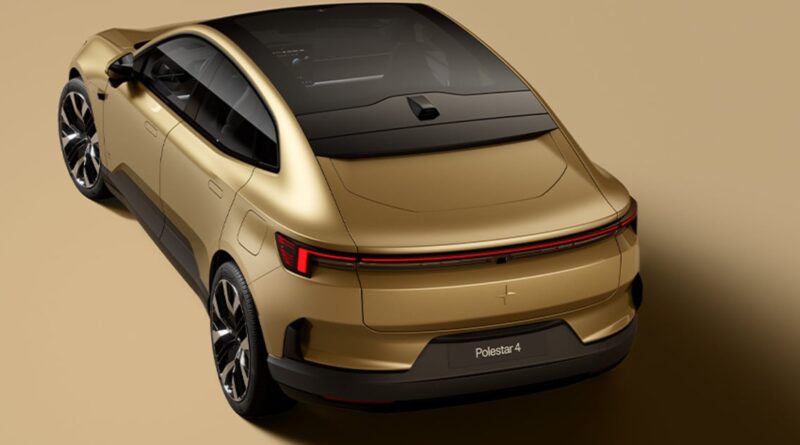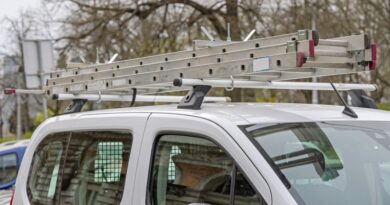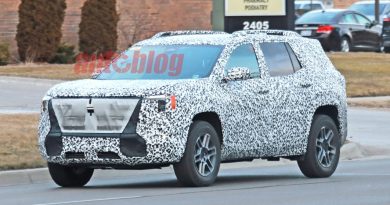Polestar 4’s lack of rear window helps safety, EV maker says
“The Polestar 4 will take an important role in the portfolio allowing us to reach a wider group of people,” Ingenlath said while showing the vehicle to a small group of journalists last month at the automaker’s design center near Gothenburg, Sweden.
That is because its starting price will be 60,000 euros, putting it below the larger Polestar 3 crossover that starts at 88,600 euros in Germany. In the U.S., the Polestar 4 will start at $60,000 while the Polestar 3 starts at $85,300, including shipping.
“The Polestar 4 will be a big part of our 2024 story,” Ingenlath said.
The automaker expects to sell 43,000 Polestar 4s next year, according to materials it put together before its stock listing. That number is forecast to rise to 79,000 in 2025, at which point the Polestar 4 will rank at the brand’s No. 2-seller behind Polestar 2 premium midsize fastback. The company expects global Polestar 2 sales to reach 104,000 by mid-decade.
“With the Polestar 4 and Polestar 3 we will cover the premium SUV Segment in a full-fledged way, meaning in a price range of 60,000 to 150,000 euros,” Ingenlath said.
Polestar says the rear styling and lack of rear glass also enables a new kind of immersive rear occupant experience. It also means the rearview mirror is replaced by a high-definition screen showing a real-time feed from a roof-mounted rear camera.
The advance screen and monitor enable a far wider field of view than what can be experienced in most modern cars, Polestar said. The digital feed can be deactivated to allow drivers to instead see rear occupants if needed.
Adjustable ambient lighting
Polestar design boss Maximilian Missoni, who also spoke with journalists at the design center in Torslanda, Sweden, last month, said multiple steps were taken to make sure the rear of the car doesn’t feel like a cave.
That includes adjustable ambient lighting that is inspired by the solar system, allowing the driver to customize the interior environment.
For instance, picking the plant Mars results in a red-color ambient lighting while orange lighting results when the sun is the chosen color. Along with the color comes a breakdown on the plant or the sun, providing a range of fun facts.
“This is more of Polestar-style approach to lighting, which is what we were aiming for,” Missoni said,
The new crossover is also the first Polestar with a 15.4-inch landscape/horizontal infotainment screen in the center of the dashboard rather than a portrait/vertical screen.
The new configuration makes it possible to resize the screen so that it is 100 percent, 50-50, or 30-70. This way it can be shared with a passenger. For example, if the driver only needs a small portion of the screen to see direction from the navigation system that means the passenger can use up to 70 percent of the screen to find a particular artist or song using Spotify.
The SUV has Android Automotive OS with Google built-in, including Google Assistant, Google Maps and Google Play. It also uses the Snapdragon Cockpit Platform from Qualcomm.
3D knitting
The interior and its materials have been designed around the theme of so-called “soft tech,” drawing inspiration from the fashion and sportswear industries. Polestar said the aim was to use 3D knitting of a textile made from 100% recycled polyester. The material is much like a mesh on a high-end sneaker. It is durable but it is a surface that can have light come through it.
The material was created by Polestar designers together with the Swedish School of Textiles (Borås Textilhögskolan) before being further developed with suppliers.
Up to 200 kW DC and 22 kW AC charging is included for all versions of the Polestar 4. Using AC charging it takes five and half hours to bring the battery from 0 to 100 percent. With DC charging going from 5 to 80 percent takes 32 minutes.
Safety is part of Polestar’s DNA thanks to its strong connection to Volvo Cars and these safety genes are built into Polestar 4, which features leading safety technology inside and out – tested to the same exacting standards as all other Polestar cars. Up to nine airbags are included. New partnerships bring intelligent safety technology to the fore, including the SuperVision Advanced Driver Assistance System from Mobileye.
Like Tesla’s models, the Polestar 4 has no lidar, which adds cost. Instead the crossover’s advanced driver assistance system uses 12 cameras, one radar and 12 ultrasonic sensors, which are standard. This includes a driver monitoring camera, which only relays data and does not record video, to monitor the driver’s eyes and head movements to help avoid incidents related to fatigue or incapacitation.
Together with hands-on detection in the steering wheel, the driver monitoring system helps to keep the driver actively engaged in driving, as required.
A 10.2-inch driver display is mounted ahead of the steering column and includes speed, battery and range information. To reduce distraction, a head-up display with 14.7-inch projection area in front of the driver relays key vehicle, telephone and navigation information to the windshield, with the aim of further improving driver attentiveness.
Source : Autonews.com




